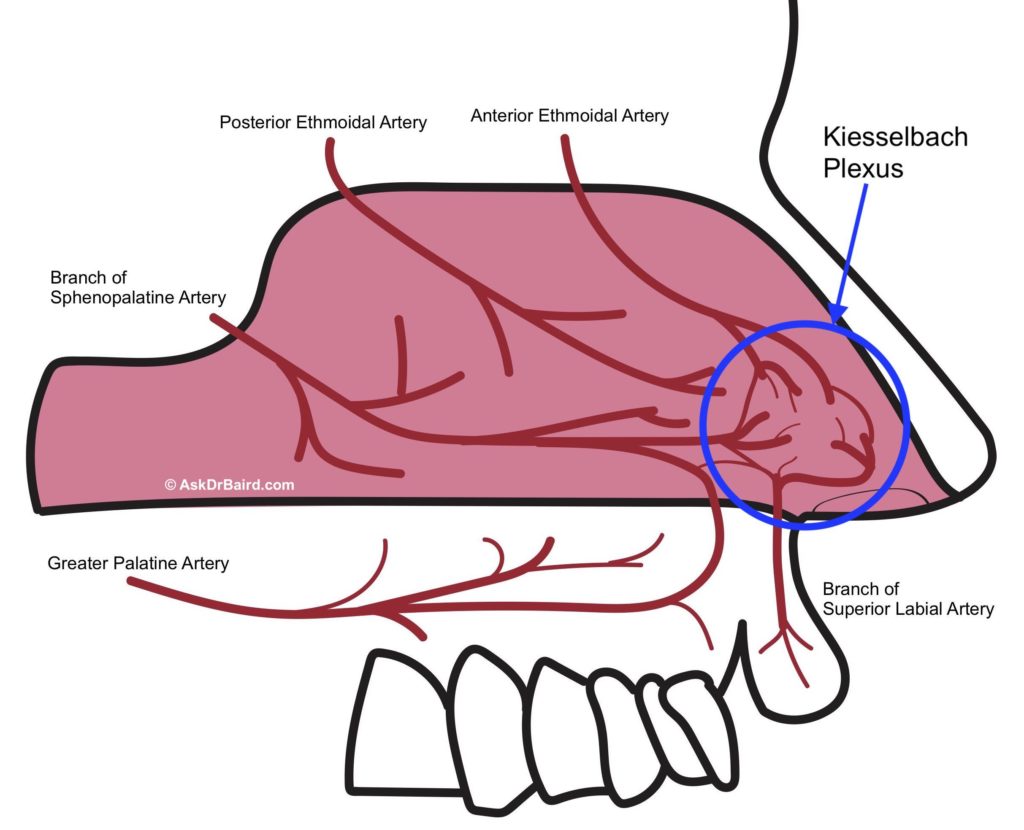For some reason, mystery still surrounds how to manage a nosebleed. Whenever I teach a first aid class, I ask everyone to show me what to do if they get a nosebleed. Invariably people pinch the bridge of their nose, or tilt their head back, or forward, or say to put an ice pack on the bridge of the nose, or to shove a tissue up the nostril.
The correct answer is to do this:

To get the bleeding to stop, the part that is bleeding needs to be compressed. A tissue helps catch extraneous blood and gives you some grip, but the goal is not to just absorb blood, it’s to stop the bleeding!
Pressure stops bleeding (except in drastic situations 😬–keep checking back and I’ll share a story or two about that someday). These are the blood vessels that need to be compressed:

Let’s look at that a little more anatomically:

You can see there are 4-5 arteries (everyone is a little different) that send off small branches to create what is called the Kiesselbach Plexus.

A plexus is a network of blood vessels or nerves. A plexus of vessels creates redundancy in how blood to a particular is supplied. A small artery in this plexus is likely fed by at least 2, maybe more, larger arteries. This means compressing just one of the arteries will not stop the bleeding. The entire area needs to be compressed or else the bleeding is likely to continue. Therefore, to stop a nosebleed, one should use the broad part of the thumb and finger to compress as much of the soft part of the nose, with the goal to apply pressure to the entire area of the Kiesselbach Plexus.
Now here’s the trick. Sometimes people compress right, but then they check every 1-2 minutes. Guess what? It will probably still be bleeding! Give those platelets and clotting factors some time to work, like 10-15 minutes even. The body is an incredible self healing machine, it just needs some help sometimes.
So what does one do for a bloody nose? Pinch it broadly and give it some time. If it’s pinched right, no need to lean forward or back because there shouldn’t be any blood to drip one way or another (now having said that, sometimes if it has been bleeding long enough, it’s best to blow the nose really hard and get any clotted blood out before pinching it broadly. That will prevent any surprises down the back of your throat! 🤮).
What if it keeps bleeding despite this? Tune in for Part 2!



Thank you for the info and helpful explanation of what is really happening when you get a nosebleed. I have a couple boys that get them often and this clear representation of what needs to be done to stop the blood flow makes perfect sense! Will definitely share my new knowledge next time a nosebleed occurs!
Thanks to your model as well! ❤️
Glad this information was helpful. Stay tuned for part 2!